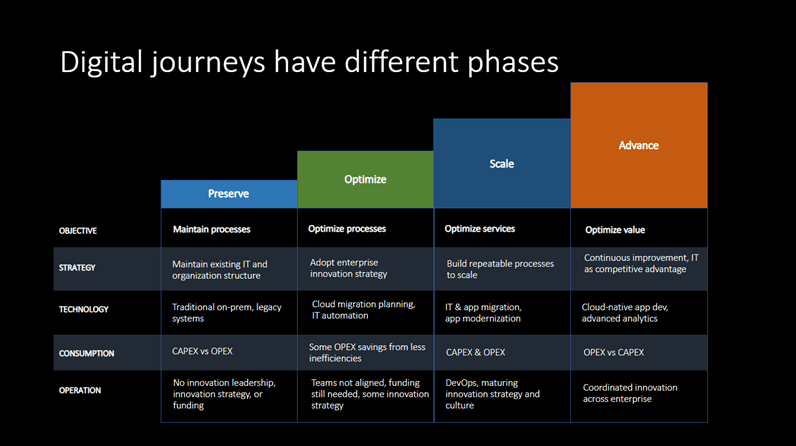Today’s clients expect more. According to a recent Salesforce study, 66% of consumers expect companies to understand their needs and expectations. Moreover, 70% of customers say understanding how they use products and services is very important to winning their business. These expectations call for organizations to pursue new transformation initiatives that improve customer experiences and drive future innovation and growth.
To transform digitally, many organizations often focus on the technology capabilities that need to be adopted. However, while having the right technology is critical, it’s only part of the story. Digital transformation is the “rethinking” of how organizations use technology, in addition to both talent and processes, to pursue new business opportunities and revenue streams.
Human-centered design keeps the human experience as the core focus of digital transformation. This post highlights why organizations seeking to compete in the future must integrate their end-users’ needs with their technology capabilities and operating models today.
What Does Digital Transformation Look Like?
While digital transformation looks different for every organization, there are phases that most organizations undergo on their digital journey. The extent to which you should look to transform depends on where you currently are.

Prior to 2020, it seemed that digital transformation was a “buzzword” with many different interpretations. Enter 2020 and the landscape of digital transformation changed overnight. IT leaders already traveling down this road have since drastically increased their speed of transformation.
Organizations not already on this path had to pivot, redirecting financial and human capital to address the unique needs of the business. For many organizations, the pandemic catalyzed digital business initiatives as we adapted to the demands of employees, customers, and other human stakeholders, who were forced into new digital options that they have now come to favor.
The end-goal for a digital organization is to drive coordinated innovation with continuous improvement, in support of employee and customer experiences. From a technology standpoint, organizations get closer to this goal through IT modernization, application modernization, and migration to the cloud. Put together, these IT initiatives deliver an environment that supports cloud-native application development for faster innovation and positive customer experiences.
How Operating Models Must Transform
As technology evolves, so too must operations and processes. DevOps initiatives and Agile frameworks must be adopted to realize the full benefits of new technologies, which can ultimately impact an organization’s culture.
As part of this operational shift, IT and business teams are more closely aligned to deliver greater value to customers. Large, siloed teams, need to break down into smaller agile teams that can provide a continuous integration/continuous delivery (CI/CD) pipeline against a product backlog with a set of defined metrics.
When organizations have an effective DevOps and Agile culture, they’re able to rapidly innovate to meet the evolving expectations of today’s customers. The end-to-end innovation process involves idea generation from various user inputs and design thinking to create products with end-user satisfaction as the top priority.

Talent Transformation

The 5 Digital Workplace Trends of 2022 You Need To Know
So what’s continuing to drive change in 2022 and what technologies can help get you there? Through our work with organizations across different industries, these are the top 5 digital workplace trends we’re seeing this year that you should know more about.
The Great Resignation has further accelerated the need to integrate human-centric design into digital transformation initiatives. Following the unprecedented mass exit from the workforce in 2021, talent is becoming more and more scarce. Organizations must now rethink their methodologies for recruiting, engaging with, and retaining employee talent.
Hybrid work has become more commonplace in organizations, and business leaders are tasked with the challenge of driving collaboration and productivity across distributed teams. Digital strategies in technology and culture must be used to improve employee engagement and satisfaction, while at the same time keeping remote employees secure.
Progressing Your Digital Journey Forward
Ultimately, there are many different aspects to technology transformation that business leaders should consider when moving their digital journey forward. The organizations that transform most effectively are the ones that plan not only for technology and processes but also for the human elements in transformation. For many organizations, transforming culture while at the same time driving innovation is not a simple task.

No matter where you currently are on your digital transformation journey, the Colorado Beach team an help you where you are and take you where you need to go. Colorado Beach has proven expertise in helping organizations across industries align their business goals with transformation initiatives. In addition to our deep IT integration expertise and recognized partnerships with leading technology platforms, COBeach helps organizations develop culture and innovation frameworks that set them up for long-term success.
